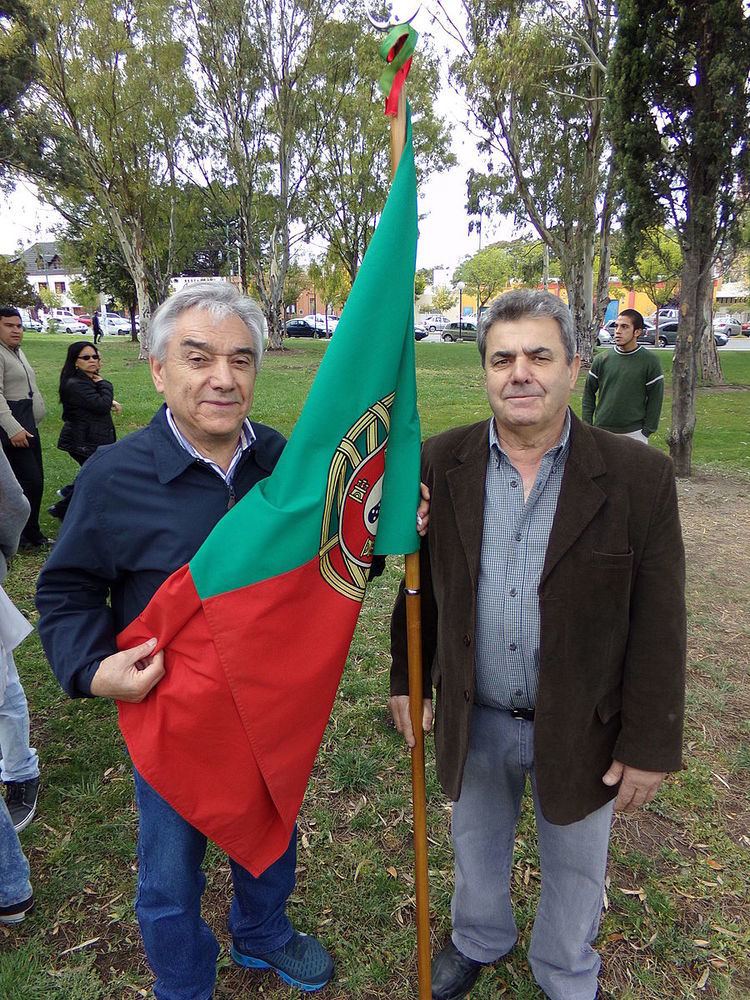 | ||
Portuguese Argentines are Argentines of Portuguese descent or a Portugal-born person who resides in Argentina.
Contents
Portuguese Argentines has always been a small group in Argentina, but they were the main group of immigration when that country was a Spanish colony.
History
Portuguese immigration has been comparatively small in Argentina because the idiomatic reasons have influenced preference by the neighbouring Brazil. However, the Portuguese were the largest foreign group in the last years of the Viceroyalty. In 1850, there were sailors and petty traders from Lisbon and Oporto; they were later joined by artisans, labourers and farm workers. The Portuguese Club, in the neighborhood of Isidro Casanova, recognizes the origins the migration of a group of families during the military dictatorship of Antonio Oliveira Salazar (between 1933 and 1968) installed as quinteros, hornero and merchants in the metropolitan area, notably in La Matanza party.
The Portuguese was after the Spanish the largest group before 1816 and continued arriving throughout the 19th century. A large proportion settled in the interior of the country, but Buenos Aires City and Province were the main places of settlement. There already were many men who arrived in Lisbon, Oporto and coastal regions of Portugal, which focused particularly on the parishes of South by deploying multiple occupations, but mainly the naval: sailors, stevedores and porters. In the 1970s, they began organize themselves ethnically, and community life (mutual, club, newspaper) would be more active in the following decades. To Salliqueló came an important group from a settlement of 1905.
Demography
An important Portuguese community was established in Buenos Aires. Have also been established in Greater Buenos Aires (in the south, in Villa Elisa, La Plata, Ezeiza and in Esteban Echeverría Partido) and also in the West: Isidro Casanova, González Catán ( La Matanza Partido), Pontevedra, Libertad and Olavarría. In addition, communities in Comodoro Rivadavia, Mendoza and Oberá (where the community has a ballet called Corazón Luso - in English: Luso Heart).
Portuguese Clubs
Around the 1970s started based on La Matanza clubs of the foreign communities likely as a form of defense against the threat of the loss of the important elements of culture itself.
The members of the Portuguese community participated in this process of creation of an area of cultural heritage. Are 23 Portuguese clubs that exist in the Argentina and of Isidro Casanova, one of the most important in this country, it was founded in 1978. Subsequently the creation of another club, smaller than the previous one, took place in the city of González Catán, maintaining a constant interplay.
It could explain this rise in the Portuguese community to create clubs as a response to the threat felt by the first immigrants at the loss of their language, customs and values and who therefore try to keep them alive in the area of the club.
It should not be forgotten that for the seventies these immigrants had Portuguese or Argentina children monolingual in Portuguese attending Argentine schools where taught them the Spanish and the parents saw and felt was lost their mother tongue. In communities such as the described each generation begins with a restrictive monolingual repertoire to the intimacy of the home and the educational institutions become it bilingual and provide a wider repertoire. Bilingual subjects appear this way.
